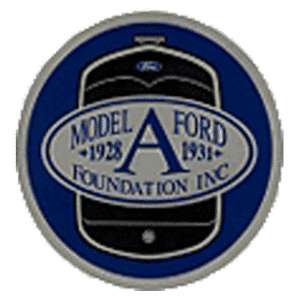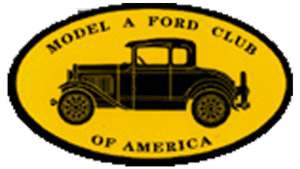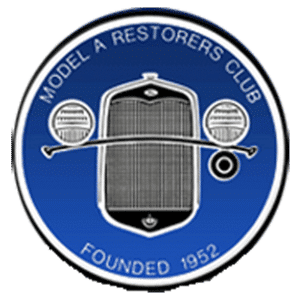Installation of A-11350 Special Replacement Starter (Bendix) Drive
On Model “A” cars and trucks in production since early October, 1928, the A-11350-C 8/10 pitch bendix drive has been used. For this drive the starting motor armature shaft has a diameter of 5/8-inch. This drive has a special form of ten tooth pinion and we call your attention to the fact that it is not inter- changeable with the standard 8/10 pitch ten tooth pinion T-1883.
Complete starting motors, as now used on Model ” A ” production since October 1st, 1928, can not be assembled on cars and trucks produced prior to October 1st, because of the change in the flywheel. Present starting motors with the 11350-C drive can only be used with the present design of flywheel.
Dealers who are reworking armature shafts for installing special bendix drive A-11350 must use especial care in performing this important operation. Recently some cases of broken armature shafts have been reported. Investigation in each instance showed that no radius had been left at the 4 1/2-inch line (see Fig. 611).
The following instructions have been care- fully worked out and must be closely followed :
Installation Instructions
The A-11350-DR bendix drive is a special type for replacing the Abell starter drive used on Model “A” cars and trucks manufactured previous to October, 1928. Its installation requires reoperation of the armature shaft and of the end bearing of the starting motor; for that reason the following instructions should be closely followed. There are two types of Ford Model “A” starting motors on which this 11350-DR drive can be mounted, the first type having a ball bearing in the starting motor end plate and the second a plain bear- ing. Ball bearing equipped starting motors can be easily distinguished from the plain bearing type by noting the ball beating retainer plate which is bolted to the end plate. The reoperation of these two starting motors for installation of the 11350-DR drive is slightly different as noted on next page.
((611))
- Remove armature from starting motor and withdraw bearing from armature shaft — bearing can be forced off by dropping the end of the armature shaft on a lead block.
- Before turning down armature shaft make certain it is not bent—if any such condition is shown when the shaft is indicated on centers, shaft should be straightened before starting reoperation.
- The file-hard surface of the portion to be turned down can be ground off, thus making the turning operation much easier.
- With the armature mounted in a lathe, turn down the enlarged portion of the shaft to a diameter of .494—.498 or flush with exist- ing diameter a t the outer end, and back to a point exactly 4 1/2 inches from the center of the pilot screw hole in the armature shaft (see Fig. 611). Note 1/32-inch to 1/16-inch radius at the shoulder as shown below and described later. Do not try to remove all the metal in one cut, also make the last cut a very light one; this helps to obtain the correct diameter and to keep the surface as smooth as possible. The turned down diameter should merge into the similar existing diameter at the outer end without leaving any shoulder or tool marks of any kind at the point where the turning started.
- In completing the turning operation care must be exercised not to mar the surface of the shaft back of the 41/2-inch line, inasmuch as this is the bearing portion of the armature shaft. Leave a radius of between 1/32-inch and 1/16-inch at the 4 1/2-inch line where the larger diameter merges into the newly turned diameter (see Fig. 611). Do not leave a sharp tool mark at this point and avoid any under- cutting of the shaft because this results in possible breakage of the shaft at any such weak point. The radius is of special importance, inasmuch as it strengthens the shaft at the point of the change in diameter
- After completing the turning operation smooth the newly turned diameter by a light touch with a file with the shaft turning in a lathe.
- Before reassembling armature shaft remove all chips and dirt which may have wedged in between the armature wires—re-assemble the ball bearing up against the shoulder on the armature shaft and make sure it is well packed with lubricant.
- In assembling the motor use a new ball bearing retainer plate, part No. A-11133-R, or bore out the present plate to a diameter of 1 r^-inch so that the stop nut on the end of the bendix drive can pass through this retainer plate (see fig. 612)
- Before assembling the bendix drive on the starting motor, rub a little grease or oil on the armature shaft so as to prevent any rusting between the bendix shaft and the armature shaft. Do not place any lubricant on the screw threads on the shaft. When assembled, the stop nut of the bendix drive should be against the shoulder on the armature shaft at the 4 1/2-inch line, but in assembling the drive it should not be necessary to compress the spring more than 1/16-inch. If you must compress the spring more than 1/16-inch to insert the spring screw pilot end into the armature shaft, you will find one of the following conditions present: (a) The 4 1/2-inch dimension on the armature shaft is undersize, (b) the ball bearing end plate has not been replaced or the hole bored larger or, (c) in case the starting motor is of the plain bearing type, additional metal should probably be removed from the bearing boss (as described later). When the bendix drive has been completely assembled, compress the gear and shaft portion backward, then release it and make certain the drive freely resumes its original position. An armature shaft diameter of over .498-inch or a bent shaft restricts the free sliding movement of the gear and shaft portion of the drive on the armature shaft and this results in failure to mesh and damage to the pinion and flywheel gears.
- In assembling the bendix drive, make certain that the two logs on the end of the head portion fit into the slot of the sleeve portion—turn down the head screw until it holds the spring tightly in place and bend up the lip of the lock washer against a a flat side of the head of the screw (See Fig. 614). A new Woodfruff key, No. 5 should be used if the old one is sheared or damaged. In assembly of the head portion, make certain the Woodruff key fits into the keyway slot of the head and that the key is not pushed forward into the space between the head and sleeve. With no Woodruff Key connection between the bendix drive head and the armature shaft the driving torque is transferred to the pilot of the screw which will soon shear under such conditions.
((612 + 613 + 614))
Installation of Plain Bearing Starting Motors
Follow the same instructions listed in para- graphs Nos. 2, 3, 4, 5, 6, 7, and 10, omitting No. 1, and substitute the following for No. 8 paragraph:
The face of the plain bearing or boss portion of the starting motor end plate must be cut back a distance of 9/64-inch in order to provide the necessary space for the assembly of the replacement drive. It is best to do this operation in a lathe, being careful after completing it to remove any burr which might have been thrown into the bearing itself. Note Fig. 613 showing that the distance between the mounting face of the end plate and the end of the boss must be 11/64-inch after completing the facing operation.
In reassembling the starting motor on the engine, remove any shims which may have been used between the starting motor flange and the flange on the flywheel housing.
Before installing, the starting motor, the flywheel ring gear teeth should be carefully inspected. It is of course difficult to note the meshing or back end of the teeth from the starting motor hole, but with the aid of a mirror this can be accomplished. If the flywheel teeth are badly damaged, a new ring gear should be installed. Meshing of the pinion gear takes place at two opposite points on the flywheel ring gear and if the teeth at these points are only slightly burred, the worst of these burrs can probably be removed by using a small file—any filing should be in the same direction as the original chamfer and no chamfer should be filed on the side of the tooth originally left unchamfered.
It has been called to our attention that some dealers are attempting to replace the former starter drives on the Model “A” by reoperating the T-1883 type bendix as used on the Ford, Model “T,” or in some cases reoperating other type bendix drives We have noted the results of this attempted reoperation in several instances and wish to advise that the reoperation of any such type bendix for use on the Model “A” car is not only inadvisable but must be discontinued at once




